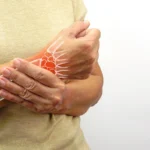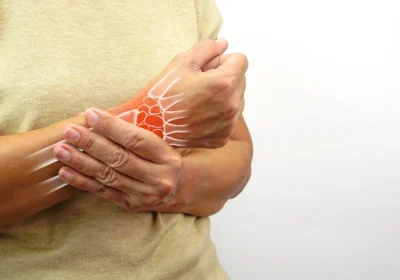
What are the characteristics of Apert syndrome?
It is every couple’s dream to have their own child that lives healthy and active. Children that are healthy and active can have all the opportunity to have a good childhood and a brighter future. However, some children may not be lucky to have such a happy and normal life. There are medical conditions that may have caused a child to be different from others and to live differently. This can put pressure on both parents and the child. In this DoctorOnCall’s article, we will be learning about Apert syndrome.
Apert syndrome is a genetic disorder characterised by skeletal abnormalities. It is a condition that causes fusion of the skull, hands and feet bones. Apert syndrome is a rare disease as it occurs in 1 out of 65 000 to 200 000 births. Both females and male can be affected. Typically, neither of the parents have this condition but the gene mutation has made it possible for the child to have the condition. Although parents of all ages can have children with Apert syndrome, the risk increased in older fathers.
Mutations in the gene known as FGFR2 cause the Apert syndrome. This specific gene provides instructions to make a protein known as fibroblast growth factor receptor 2 (FGFR2). The key role of the FGFR2 protein is the development of bone through signalling immature cells to become bone cells. Mutation in the specific part of the FGFR2 gene alters the protein and the abnormal signalling. As a result, the cells mature too quickly and promote premature fusion bones in the skull, hands and feet.
The main feature of Apert syndrome is the premature closure of the skull’s bones (craniosynostosis). A varied number of fingers or toes fused together (syndactyly) can be found. Fusion of the hands tends to be more severe compared to the feet even though severity of the fusion varies. Below are the characteristics of Apert syndrome beside the main feature:
- A distinctive pointed head and high, broad forehead
- Sunken middle face (midface hypoplasia)
- Wide-set (hypertelorism) and bulging eyes (exophthalmos)
- Outside corners of the eyes that point downward (down slanting palpebral fissures)
- Both eyes not line up in the same direction (strabismus)
- Shallow eye sockets (ocular proptosis)
- Opening in the roof of the mouth (cleft palate)
- Dental problems such as missing teeth, irregular tooth enamel and crowded teeth
- Vision impairment
- Repeated glue ear and hearing problems
- Breathing difficulties
- Sleep disorder (sleep apnoea)
- Mild to moderate intellectual disability
- Unusual heavy sweating (hyperhidrosis)
- Patches of missing hair in the eyebrow
- Oily skin with severe acne
Apert syndrome is diagnosed during pregnancy. The characteristics can be seen in ultrasound from around as early 22 weeks of pregnancy. This condition is usually diagnosed at or soon after birth, based on the characteristics. Diagnosis is confirmed by genetic testing. Imaging tests such as MRI or CT scan is used to detect craniosynostosis or other bone abnormalities.
A child with Apert syndrome will need a lot of support especially from a large team of health professionals. Typically, the child will need to undergo a number of surgical procedures as the child grows. Surgery includes making the skull larger, separating the fused fingers and toes, to properly align facial features, correcting the jaw and to treat airway obstruction. Surgeries usually started at the age of 1 year old. Apart from surgeons, other healthcare professionals such as neurologists, cardiologists, dentists, otolaryngologists and many others can help improve patients’ wellbeing. Children who are treated at specialised multidisciplinary centres usually develop the most successfully. Comprehensive treatment program increases the chance of a child with Apert syndrome to grow normally. This will help provide better chances for them to be successful in their life which comprise education, work and social. Some of the health problems associated with severe Apert syndrome may shorten the life expectancy in children but treatment can help minimise the risk. Many people with Apert syndrome have a normal life span just as other normal healthy people.
It is important to treat children with Apert syndrome because when it is left untreated, it can lead to many complications such as prolonged respiratory issues and eye problems that can cause great discomfort to the child. Complications may also increase the chance of early death. Getting early diagnosis and treatment can help children to have a much happy and better life. This also translates to a brighter future.
In essence, Apert syndrome is a rare genetic disorder caused by mutation in the FGFR2 gene. Due to the fact it is named as a syndrome, there are many characteristics that can be found in children with Apert syndrome. Treatment involves a lot of support from many different medical specialties. Treatment often continues in adulthood meaning the child will need to get continuous medical attention and attend doctor’s appointments. It is best for parents to understand the timeline or get a rough idea of how the treatment plan will be by having a discussion with the doctor so that they can be well prepared.


















